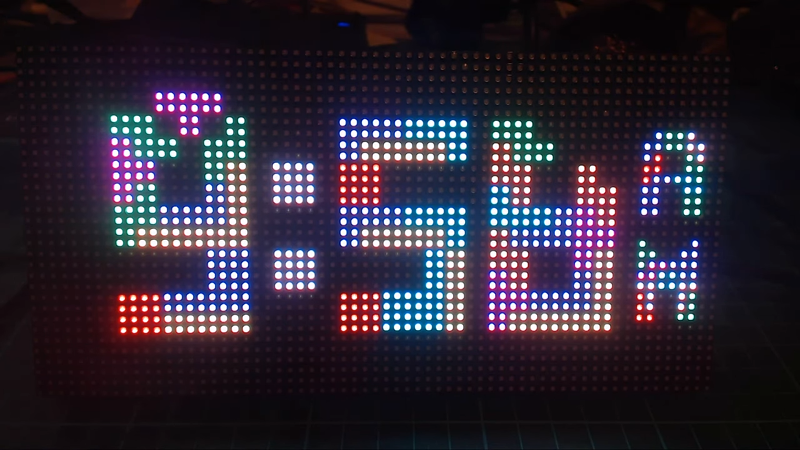We have had no shortage of clock projects over the years, and this one is entertaining because it spells the time out using Tetris-style blocks. The project looks good and is adaptable to different displays. The code is on GitHub and it relies on a Tetris library that has been updated to handle different displays and even ASCII text.
[Brian] wanted to use an ESP8266 development board for the clock, but the library has a bug that prevents it from working, so he used an ESP32 board instead. The board, a TinyPICO, has a breakout board that works well with the display.
There are also some 3D printed widgets for legs. If we’re honest, we’d say the project looks cool but the technology isn’t revolutionary. What we did find interesting though is that this is a good example of how open source builds on itself.
Of course, the library does a lot of the work, but according to [Brian] the it has several authors. [Tobias Bloom] started the code, and others have changed the library to draw ASCII characters and to support any display that uses the AdaFruit GFX-style library.
So while the code is simple, the result is impressive and is a result of [Brian] leveraging a lot of code from others — a great example of Open Source in action.
We looked at Brian’s use of this library for a YouTube subscription counter, but a clock has more universal appeal, we think — not everyone has a lot of YouTube subscribers. If you don’t have a life, you might try to recreate Tetris using the game of life.
















Could be done with a 555!
Or sufficiently many of them.
I was told someone reduced the circuit down to a couple of 2N2222A transistors.
As long as it doesn’t take the entire minute to build the time!
B^)
Looks like an improved https://www.amazon.com/Paladone-JUL121993-Tetris-Alarm-Clock/dp/B007Z14ILE/
I just want to know if the alarm plays Korobeiniki?